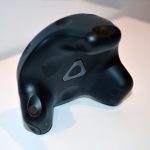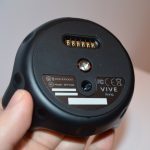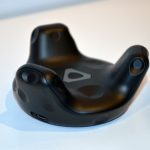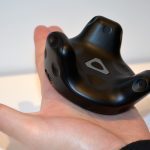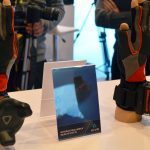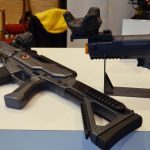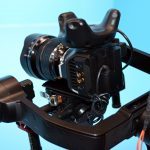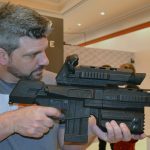The Vive accessory market is about to get a huge boost thanks to the newly announced HTC Vive Tracker. Gaming, training, and more benefit from the enhanced immersion that comes from wielding “real” tools, weapons, and instruments.
Today I was a sniper, a firefighter, and a professional baseball player, all thanks to VR. I’ve actually done all of those things in VR before, but this time I actually held a real (mock) gun, a high-pressure hose-nozzle, and a regulation baseball bat, and the immersion was far greater than just pretending a controller was any of those things.
While motion controllers are great for in-home use and cover a wide range of general VR uses cases, there’s always going to be niche experiences that benefit from having the genuine article in your hands. For the most part, pistols are fine with a generic motion controller, but if you want to do virtual long range shooting, you’re going to want a proper rifle-shaped device so that you can hold it in the right position, look down the scope, and keep the stock to your shoulder.
Thankfully, HTC’s new Vive Tracker is about to make specialized VR accessories way easier to use for both consumers and out-of-home VR businesses. The self-contained device is tracked by the same system as the Vive headset and controllers, and can be easily attached to everyday objects or custom-built VR accessories. With an integrated battery and its own wireless connection to the host computer, the device not only tracks objects, but can also send information like button presses and trigger pulls to the computer. With all tracking and input unified into the same system that VR devs already know how to build for makes things easier all around.
As a testament to the Vive Tracker’s breadth of uses, HTC today showed off the device with integrations across a huge range of different use-cases thanks to accessories from a number of partners. Everything from gloves to guns to bats, and even a “real” virtual camera were demonstrated.
Among a number of experiences which used the Vive Tracker with specialized accessories, here’s what it was like to be a sniper, a baseball player, and a fireman in VR.
VRsenal VR-15 and ‘The Nest’ – Sniper
![]() VRsenal had their VR-15 gun controller and haptic backpack running with The Nest, a sniping game for the Vive. The VR-15 had formerly housed an entire HTC Vive controller, but has newly integrated the Vive Tracker into the gun. The rifle, which is built for out-of-home VR systems, is appropriately heavy and robust, and includes a trigger along with two joysticks on either side of the foregrip for interacting with the game (in The Nest, this was used to toggle zoom power).
VRsenal had their VR-15 gun controller and haptic backpack running with The Nest, a sniping game for the Vive. The VR-15 had formerly housed an entire HTC Vive controller, but has newly integrated the Vive Tracker into the gun. The rifle, which is built for out-of-home VR systems, is appropriately heavy and robust, and includes a trigger along with two joysticks on either side of the foregrip for interacting with the game (in The Nest, this was used to toggle zoom power).
This version of The Nest had an integrated 3D model of the VR-15 that was identical to the controller in my hands. Sniping enemies at a distance from the vantage point of a small, high window was a blast thanks to the realistic weapon, which allowed me to tilt my head down to get an angle on the gun’s virtual scope.
Unlike trying to use a two-handed weapon like a rifle with two disconnected VR controllers, it was easy to use my forehand for subtle adjustments before firing, and the weight of the gun meant I didn’t get that annoying shaking that can easily be seen in VR when a large virtual object is connected to a much smaller real object (like the Vive controller). When I finally squeezed the trigger, the haptic backpack I was wearing gave me a very satisfying rumble that added to the immersion.

